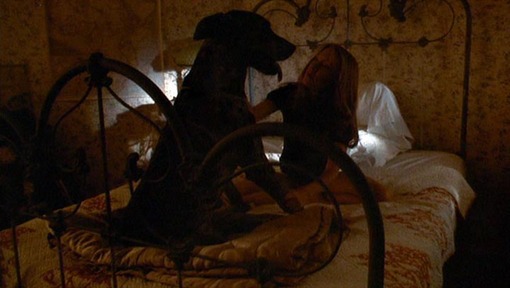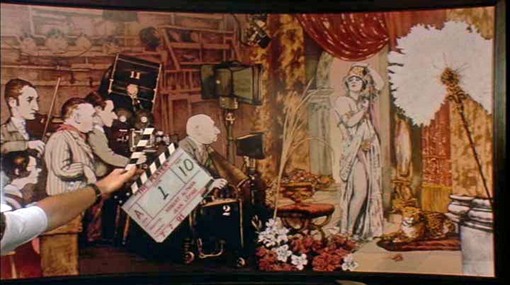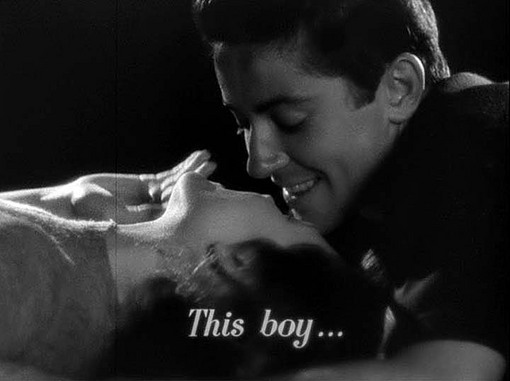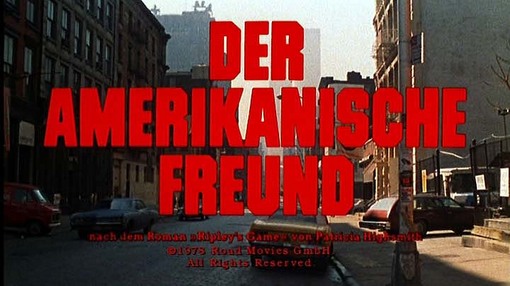From Jonathan Pacheco, Anna, TX:
When the release of “Eyes Wide Shut” drew near, a lot of the buzz was around it being a “sex film,” and some (fools) went as far as to claim that its ambition was to be the “sexiest film ever” (after all, Kubrick had broken the molds of other genres). After “EWS” came out, the buzz was that it was a letdown — due largely to the fact that it was “not sexy.” Subsequently, many felt that it was a sub-par film, almost unworthy of the Kubrick moniker.
View image
Unfortunately, they missed the point. The opening shot to “Eyes Wide Shut” is short and simple: Nicole Kidman’s character getting undressed. I’m sure many saw this as a tease, a promise of what’s to come. But I believe Kubrick was using it for the exact opposite purpose, telling us to forget about our preconceived notions of what this film was going to be (or, as you pointed out, Jim, what a narrative should be). In essence, the shot is so brief that it’s almost as if Kubrick is saying “Okay, here: Nicole Kidman naked. Satisfied? Now get that out of your mind and let me tell my story.” Many films don’t have their nudity so early on, so perhaps Kubrick put that quick flash in there to see if we’re paying attention. The next time we see Kidman, she’s doing something very unsexy (using the toilet), and further events tell us that some things are not what we expect them to be (for example, Tom Cruise’s character turning off what we believe to be the background score).
Yes, more nudity follows in the film, from Kidman and many others, but Kubrick is telling us that the nudity and sex is not really the point; he’s not setting out to make the “sexiest film ever.” What is his point, then? I’m not sure. It’s a film that can be watched many times and still not be totally understood — just like some other great Kubrick films.
JE: You’re quite right, Jonathan. That eye-opening first shot IS a ravishing tease, but not in the way viewers might expect — plucked out of time and space, floating in isolation between the white-on-black titles for Cruise/Kidman/Kubrick, and the name of the movie itself. Blink and you’ll miss what Kubrick is doing from the moment the picture starts. “EWS” had been accompanied by the usual hyperbolic pre-release rumors that invariably swirled around rare and secretive Kubrick projects while they were still in the works. In 1979/80 “The Shining” had been touted in advance as “the scariest movie ever made” (did Kubrick really say that was his goal?) and in 1986/87 “Full Metal Jacket” was anticipated as as “the ultimate Vietnam movie” (whatever that was meant to mean). This sort of buzz, whether or not inflamed by Kubrick himself, helped intensify general interest in the movies but, as you point out, it was also ultimately misleading. Kubrick, more than any other filmmaker, taught me not to get distracted by the movie I was expecting, and to simply watch what was happening on the screen instead — because “The Shining” and “Eyes Wide Shut” were absolutely NOT the movies I thought I saw the first time I watched them.
Allow me to riff a little on this “EWS” shot: The first thing you notice is, of course, Kidman dropping her dress. The dominant color is the (warm, feminine) red of the drapes that frame her — and that are reflected in the mirrored closet doors to the left. The shot is not perfectly symmetrical, but in addition to the reflected curtains and the fleshly symmetry of Ms. Kidman, there is a lot of twinning going on here: Two pairs of identical columns mask the image; a couple of overlapping tennis rackets lean in the corner; pairs of shoes are lined up, rather haphazardly, underneath the window…
December 14, 2012





